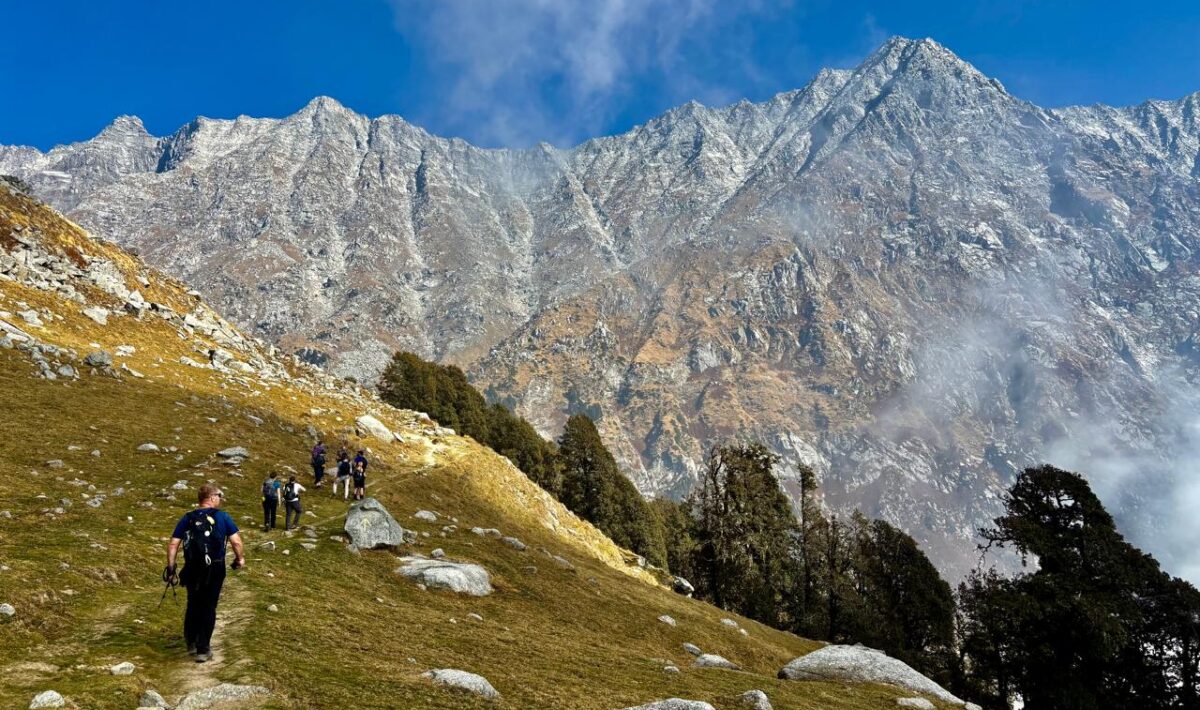Nestled in the lap of the Dhauladhar mountains, Dharamshala is one of Himachal Pradesh’s most scenic hill towns, attracting nature lovers, spiritual seekers, and adventure travelers alike. Whether you’re coming to explore the vibrant Tibetan culture, trek through the pine forests, or simply relax in the cool mountain air — knowing what kind of weather to expect in Dharamshala is key to planning the perfect trip.
Let’s break down Dharamshala’s climate season by season, so you know the best time to visit based on your interests.
Spring (March to April): Blooming Beauty and Perfect Hikes
Temperature Range: 15°C to 25°C
Weather: Pleasant days and cool evenings
Best For: Sightseeing, photography, hiking
Spring in Dharamshala is a magical time. The harshness of winter starts to fade, the snow begins to melt from the lower peaks, and nature comes alive with blooming rhododendrons, fresh mountain air, and sunny skies. This is one of the best times to go for day hikes to Triund, Kareri Village, or Naddi, as the trails are dry and the views are stunning.
Hotels and homestays begin to see more bookings during this season, but it’s not yet peak tourist time — so you get a great balance of pleasant weather and fewer crowds.
Summer (May to June): Escaping the Plains’ Heat
Temperature Range: 20°C to 32°C
Weather: Warm days, pleasant nights
Best For: Trekking, camping, cultural exploration
During May and June, Dharamshala becomes a popular summer escape from the heat of Delhi, Punjab, and other northern cities. While the lower town can feel slightly warm during the day, Upper Dharamshala and McLeod Ganj remain comfortably cool, making it perfect for sightseeing and adventure.
This is also the best time to do longer treks like Indrahar Pass, Kareri Lake, or Laka Glacier, as the snow has melted enough for safe passage, and the trails are accessible. Expect a lively vibe, especially around McLeod Ganj, with cafes bustling, yoga retreats open, and plenty of festivals and events happening.
Just remember to book your accommodations in advance, as this is one of the busiest times in Dharamshala.
Monsoon (July to September): Lush and Underrated
Temperature Range: 18°C to 28°C
Weather: Rainy, misty, lush green landscapes
Best For: Nature photography, peaceful stays, spiritual retreats
Monsoon in Dharamshala is dramatic and beautiful. Frequent rains wash the hills, turning the entire region into a lush green paradise. Waterfalls swell with rainwater, clouds drift between pine trees, and the air feels fresh and cool.
While the heavy rains can cause landslides on highways or interrupt trekking plans, monsoon is perfect for those who enjoy a quiet retreat. Spiritual seekers and yoga enthusiasts find this a great time to stay in meditation centers or attend workshops. The rain gives everything a mystical vibe, and you’ll find great deals on accommodations during this off-season.
If you’re into monsoon treks and don’t mind a bit of mud, this can be a magical time to explore the less-traveled paths with a local guide.
Autumn (October to November): Golden Colors and Clear Views
Temperature Range: 10°C to 25°C
Weather: Crisp air, sunny days, chilly nights
Best For: Trekking, sightseeing, festivals
Autumn is perhaps Dharamshala’s most photogenic season. The monsoon clouds are gone, the skies are crystal clear, and the air is crisp and clean. The Dhauladhar range often shows off its first fresh layer of snow, creating jaw-dropping views from almost every part of town.
This is the perfect time for those who love photography, mountain treks, and peaceful long walks. Local festivals like Diwali and Dussehra add a cultural touch to your visit. Most trekking routes, including Triund, Kareri Lake, and Minkiani Pass, are still open before snowfall starts closing higher altitudes in late November.
Winter (December to February): Snowy Escapes and Cozy Vibes
Temperature Range: 0°C to 15°C
Weather: Cold days, freezing nights, occasional snowfall
Best For: Snow lovers, cozy stays, snow trekking
Winter transforms Dharamshala into a snowy retreat, especially in the upper reaches like McLeod Ganj, Bhagsu, and Dharamkot. While the lower town stays dry with crisp air, the higher parts may experience occasional snowfall, especially in January.
This is a magical time to witness snow-covered peaks up close, enjoy hot meals by the fire, and experience the Himalayas in their rawest form. Treks to Snowline, Laka Glacier, and Indrahar Pass are often inaccessible or covered in deep snow, but shorter hikes in the lower valley are still possible.
Do pack warm clothing, as temperatures can drop below freezing at night. Winter is best for travelers seeking solitude and a cozy mountain atmosphere without the tourist rush.
Conclusion: So, When Is the Best Time to Visit Dharamshala?
Each season in Dharamshala brings a different charm. Here’s a quick summary based on your travel goals:
| Season | Ideal For |
|---|---|
| Spring (Mar–Apr) | Easy hikes, scenic beauty, less crowd |
| Summer (May–Jun) | Adventure treks, outdoor activities |
| Monsoon (Jul–Sep) | Green landscapes, photography, peace |
| Autumn (Oct–Nov) | Trekking, festivals, cultural events |
| Winter (Dec–Feb) | Snowfall, cozy stays, offbeat travel |
Whether you’re chasing adventure, relaxation, or spiritual growth, Dharamshala’s weather always has something to offer. Plan your visit according to what speaks to your soul — and the mountains will take care of the rest.










